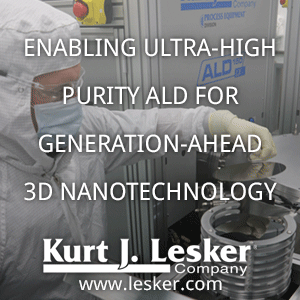JSR Corporation, including its subsidiary Inpria Corporation, and Lam Research have entered into a cross-licensing and collaboration agreement to accelerate the development of next-generation semiconductor manufacturing technologies. The partnership combines JSR’s expertise in photoresists and advanced materials—anchored by Inpria’s metal-oxide resists (MORs) for extreme ultraviolet (EUV) lithography—with Lam’s leadership in wafer fabrication equipment and process technology. By sharing intellectual property and integrating complementary capabilities, the companies aim to address scaling and patterning challenges as chipmakers pursue smaller, denser, and more energy-efficient devices for advanced logic and memory applications.
Inpria’s MORs, based on spin-on tin-oxide materials, provide high EUV photon absorption, excellent etch resistance, and reduced line edge roughness compared with conventional organic resists. These materials are fully compatible with existing lithography systems, making them attractive for high-volume production. To meet growing demand, JSR is expanding its global footprint with new R&D facilities in Japan and a production plant in Korea set to begin operations in 2026. Lam Research complements this with its Aether® dry resist technology, which replaces wet spin-coating and development with fully dry, vapor-phase processes. This innovation improves uniformity, reduces stochastic defects, and strengthens EUV absorption, enabling higher resolution and sensitivity. Aether has demonstrated direct-print 28 nm pitch patterning for logic and is already being adopted by leading memory manufacturers, offering both performance advantages and sustainability gains through reduced chemical and energy use.
These advances align with a broader industry shift toward tighter integration of materials and equipment solutions, exemplified by SK hynix’s installation of the world’s first commercial High-NA EUV lithography tool, ASML’s TWINSCAN EXE:5200B, at its M16 fab in Icheon, South Korea. Featuring a numerical aperture of 0.55—compared with 0.33 in current Low-NA EUV systems—the High-NA platform boosts resolution by 40%, enabling transistors about 1.7× smaller and wafer transistor densities nearly 2.9× higher. For SK hynix, this milestone supports the development of next-generation DRAM, reduces process complexity, lowers costs, and strengthens competitiveness in AI memory and advanced compute markets.
As one of the “big three” memory makers alongside Samsung and Micron, SK hynix has established itself as the leader in high-volume DRAM manufacturing. It was the first to mass-produce DDR5 and high-bandwidth memory (HBM3), both essential for AI and high-performance computing. Its early adoption of EUV lithography for DRAM production—and now the industry-first deployment of ASML’s High-NA EUV system—underscores its position at the forefront of DRAM scaling and density. Together, the innovations from JSR, Inpria, Lam Research, and SK hynix illustrate how collaboration across the semiconductor ecosystem is driving the breakthroughs required to sustain Moore’s Law in the era of AI and advanced computing.
Do you want me to keep the headline-style opening as above, or make it read more like a press release introduction with a formal lead sentence?
Sources:
Dry Resist Patterning Progress and Readiness Towards High NA EUV Lithography



%20(1).png)













